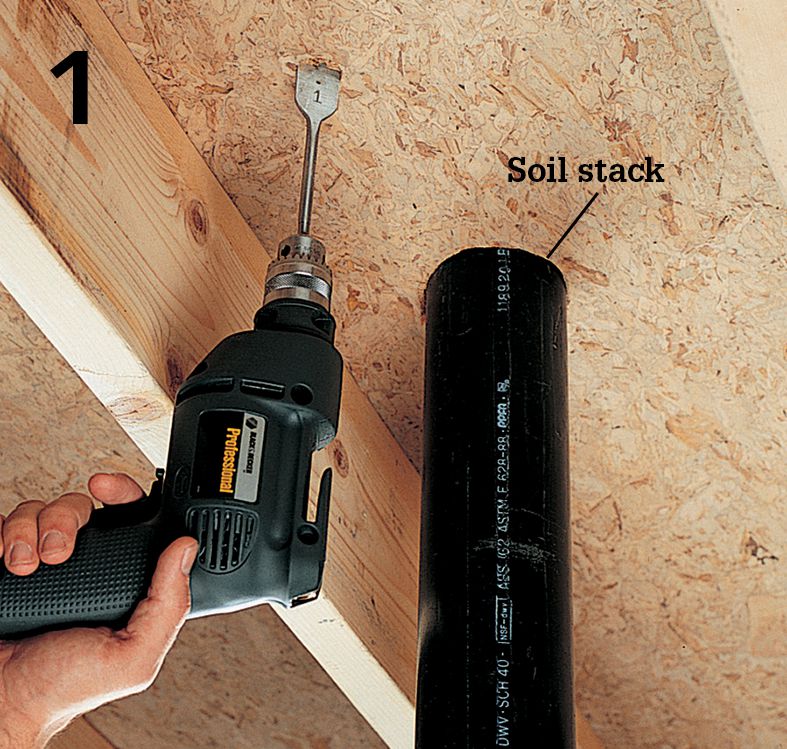

From the unfinished space below the finished wall, look for a reference point, like a soil stack, plumbing pipes, or electrical cables, that indicates the location of the wall above. Choose a location for the new cable that does not interfere with existing utilities. Drill a 1" hole up into the stud cavity.
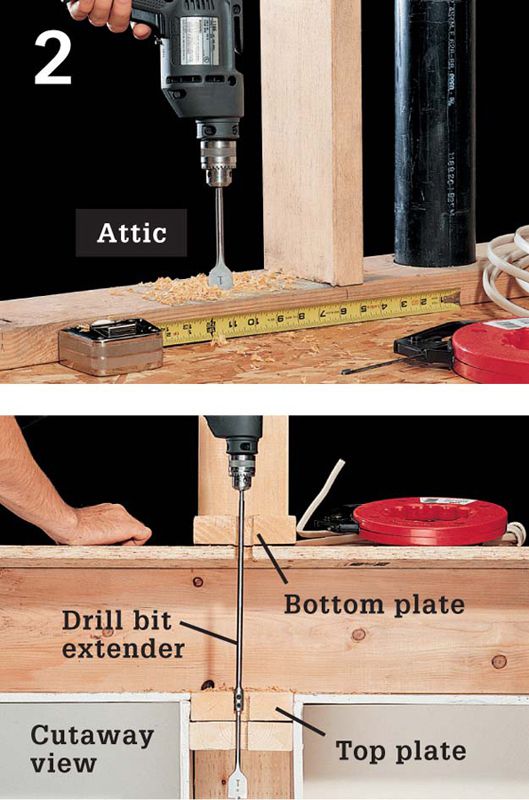
From the unfinished space above the finished wall, find the top of the stud cavity by measuring from the same fixed reference point used in step 1. Drill a 1" hole down through the top plate and into the stud cavity using a drill bit extender.
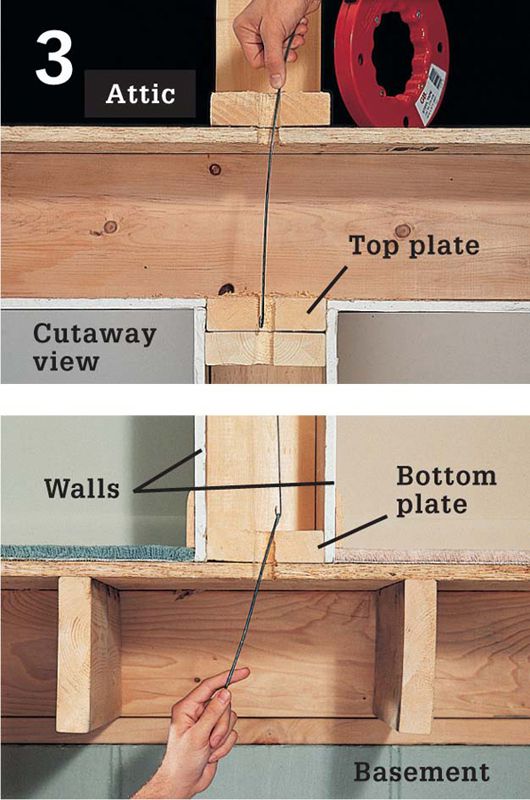
Extend a fish tape down through the top plate, twisting the tape until it reaches the bottom of the stud cavity. From the unfinished space below the wall, use a piece of stiff wire with a hook on one end to retrieve the fish tape through the drilled hole in the bottom plate.
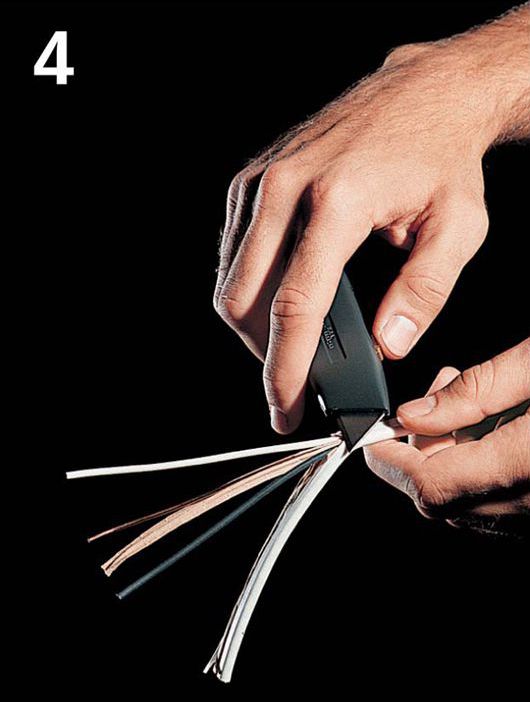
Trim back 2" of sheathing from the end of the NM cable, then insert the wires through the loop at the tip of the fish tape.
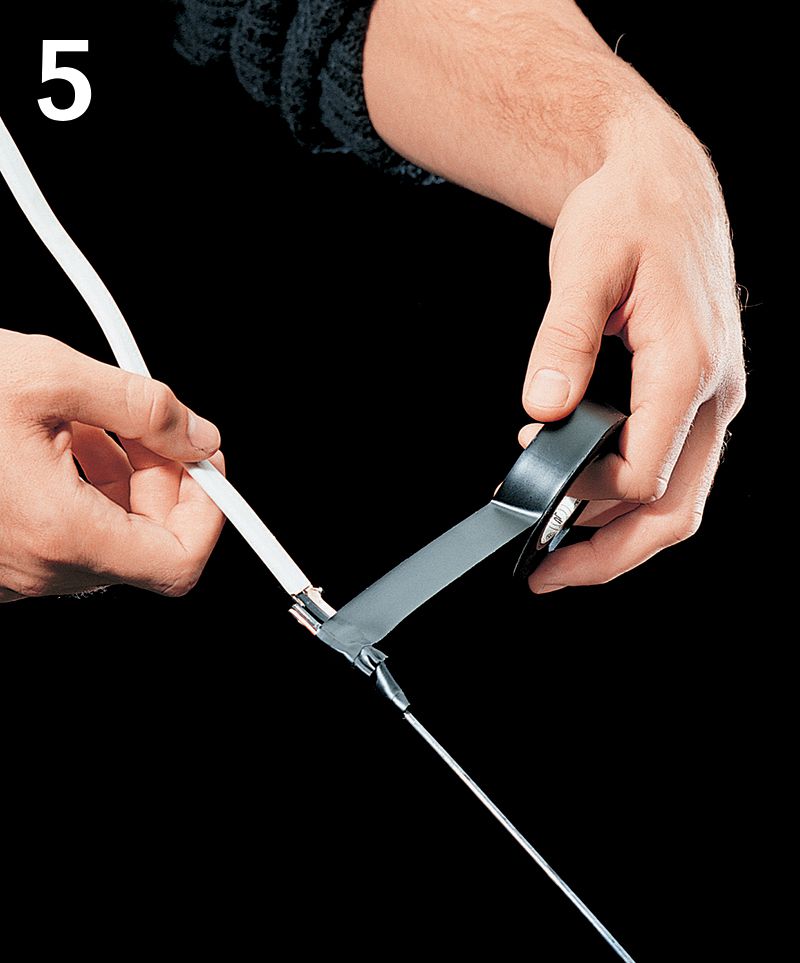
Bend the wires against the cable, then use electrical tape to bind them tightly. Apply cable-pulling lubricant to the taped end of the fish tape.
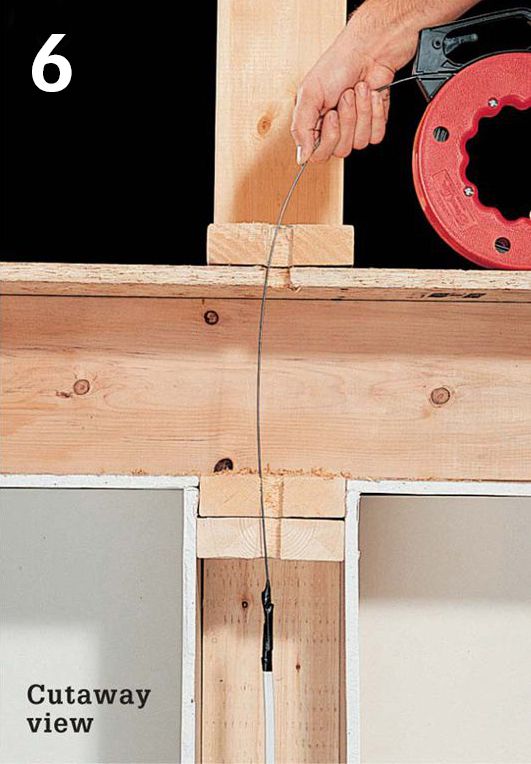
From above the finished wall, pull steadily on the fish tape to draw the cable up through the stud cavity. This job will be easier if you have a helper feed the cable from below as you pull.
 RUNNING CABLE INSIDE FINISHED WALLS
RUNNING CABLE INSIDE FINISHED WALLS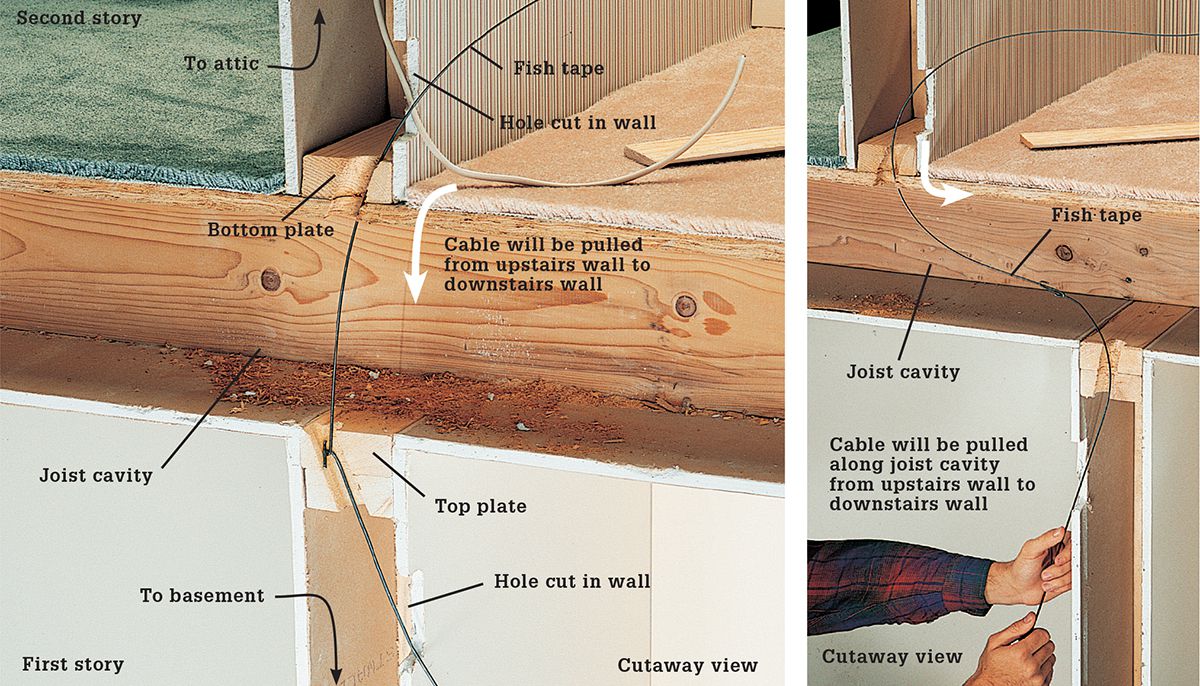
If there is no access space above and below a wall, cut openings in the finished walls to run a cable. This often occurs in two-story homes when a cable is extended from an upstairs wall to a downstairs wall. Cut small openings in the wall near the top and bottom plates, then drill an angled 1" hole through each plate. Extend a fish tape into the joist cavity between the walls and use it to pull the cable from one wall to the next. If the walls line up one over the other (left), you can retrieve the fish tape using a piece of stiff wire. If walls do not line up (right), use a second fish tape. After running the cable, repair the holes in the walls with patching plaster or wallboard scraps and taping compound.
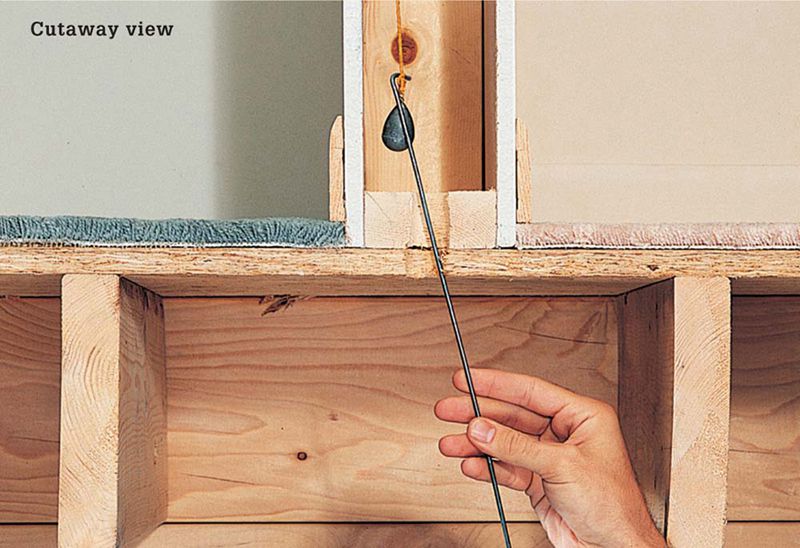
If you don’t have a fish tape, use a length of sturdy string and a lead weight or heavy washer. Drop the line into the stud cavity from above, then use a piece of stiff wire to hook the line from below.

Use a flexible drill bit, also called a bell-hanger’s bit, to bore holes through framing in finished walls.